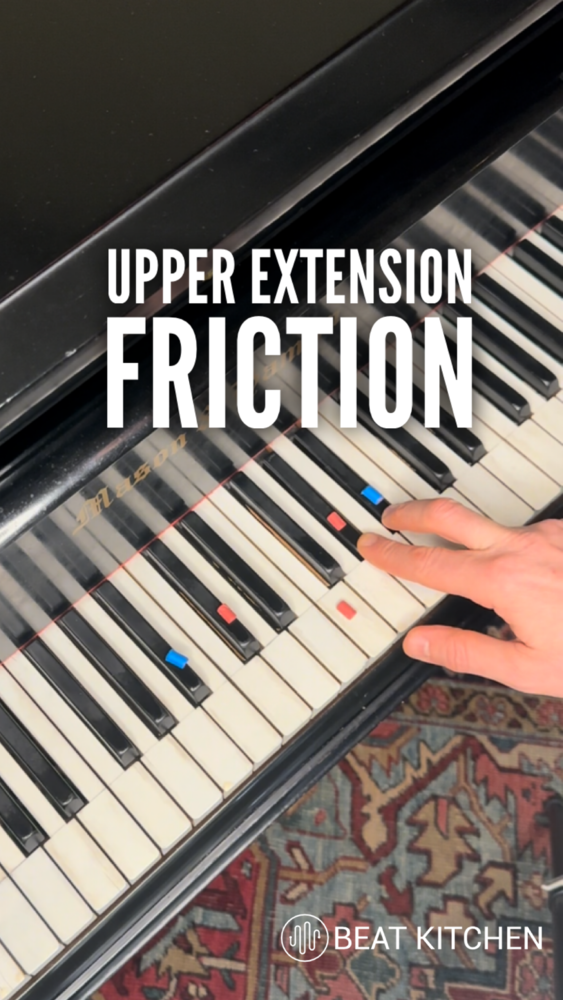If you want to put some friction in your chord, let’s have an easy chat about chord extensions. We’re looking for that rub, two notes close together in the form of a second, and there it is. But we won’t hear it until the chord grows big enough so that it reaches the octave, the third, the fifth, and here the seventh.
That’s our first bit of friction, but if we keep going, we’ll hit a nine, and that’s where the fun starts, by squeezing itself in next to that minor third in the octave below. Friction. Calling this a nine instead of a two is a kind of shorthand that tells us the structure of the chord below has already been established.
This is where we also start to differentiate sharps from flats. Think of it this way. This nine would exist whether this was a minor or a major chord.
Flat the nine, this becomes a C flat and not a B. Sharp the nine, this becomes a C sharp and not a D flat because it’s not a minor chord. Enjoy the friction either way and share it with someone who belongs in a Beat Kitchen glass.

